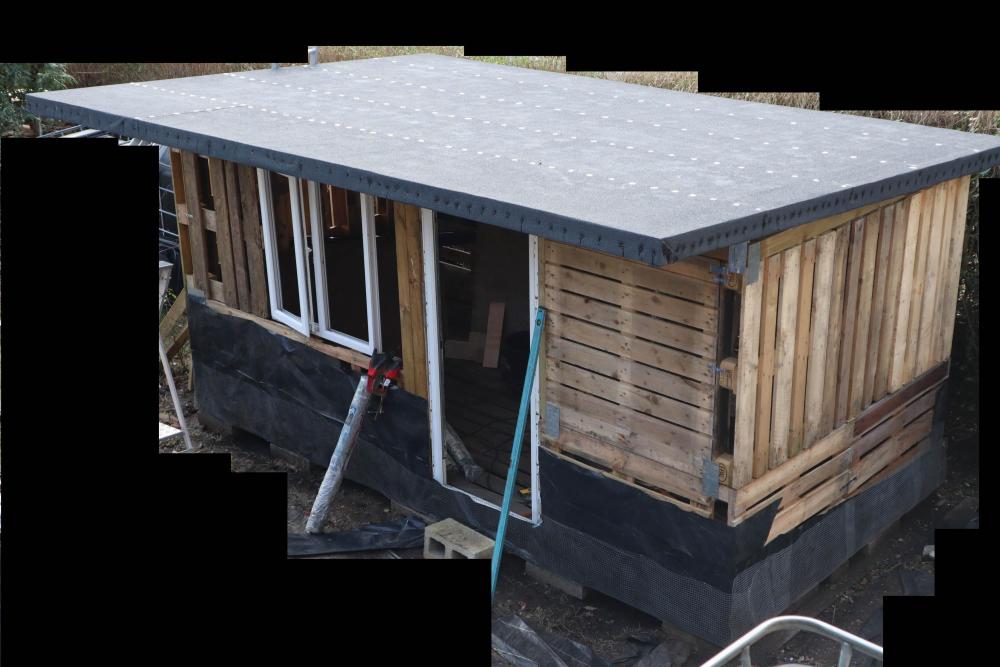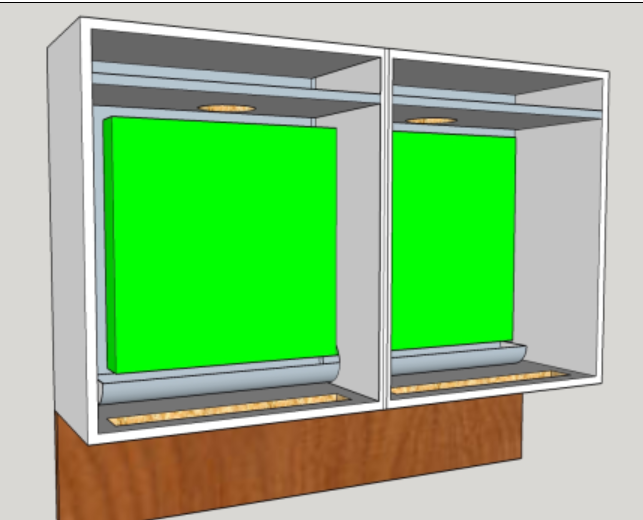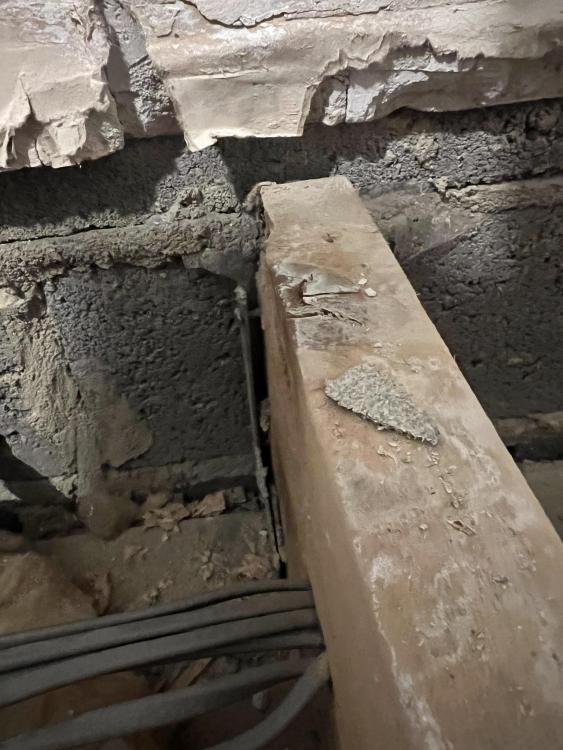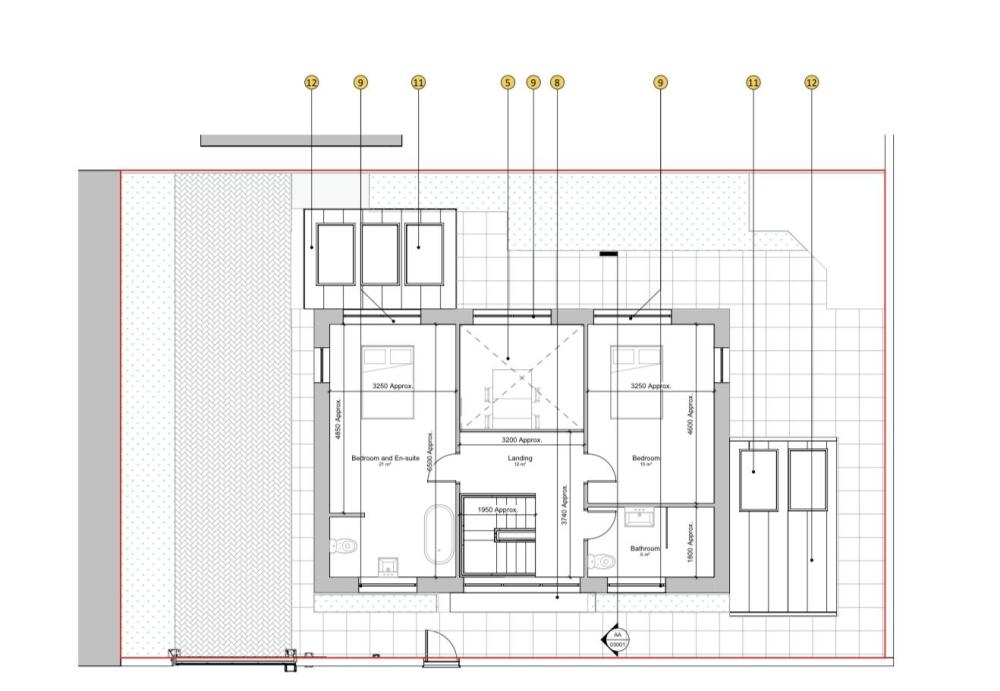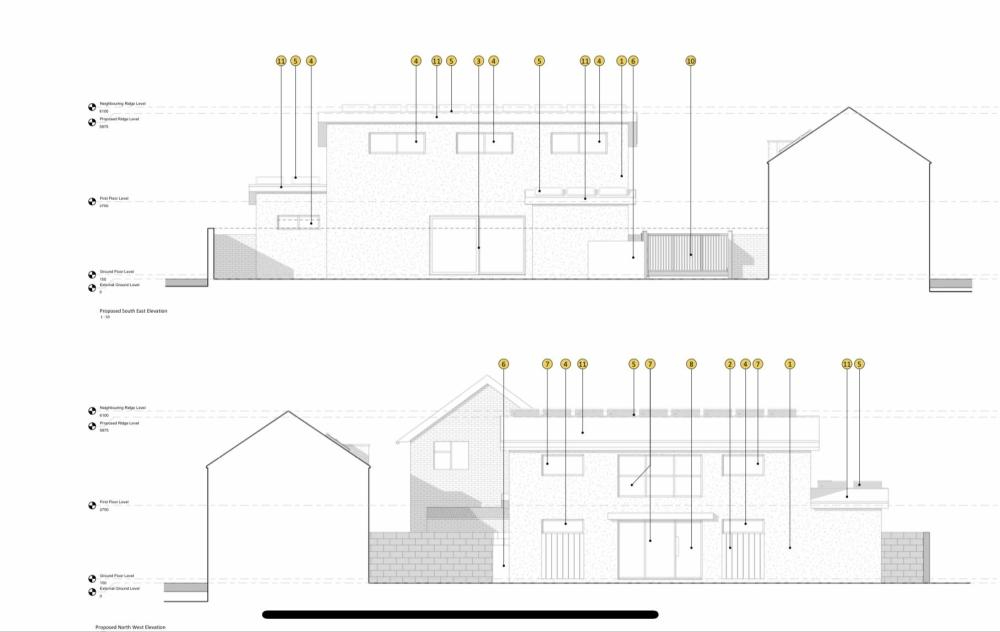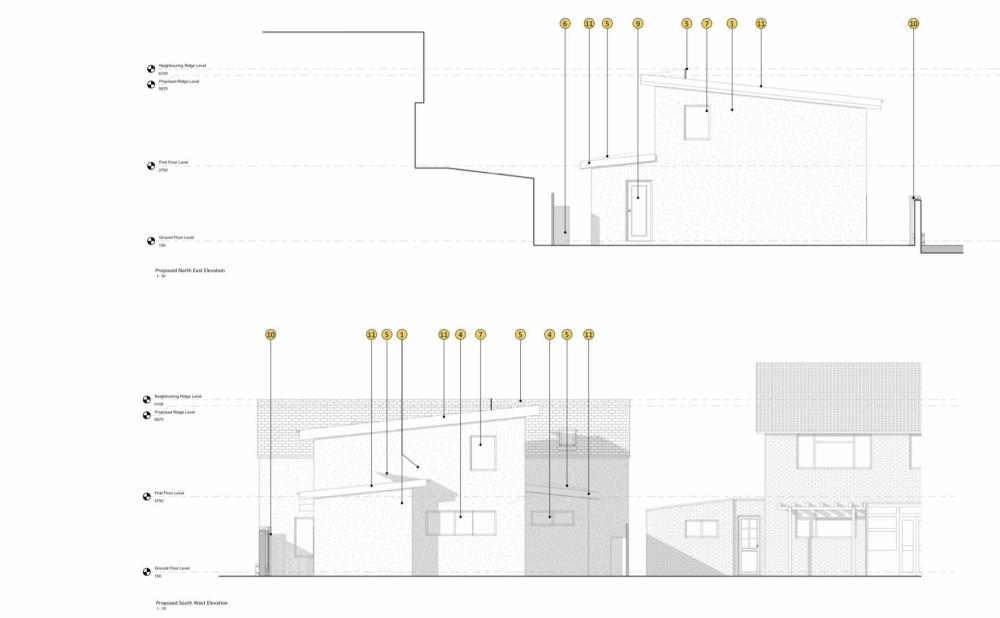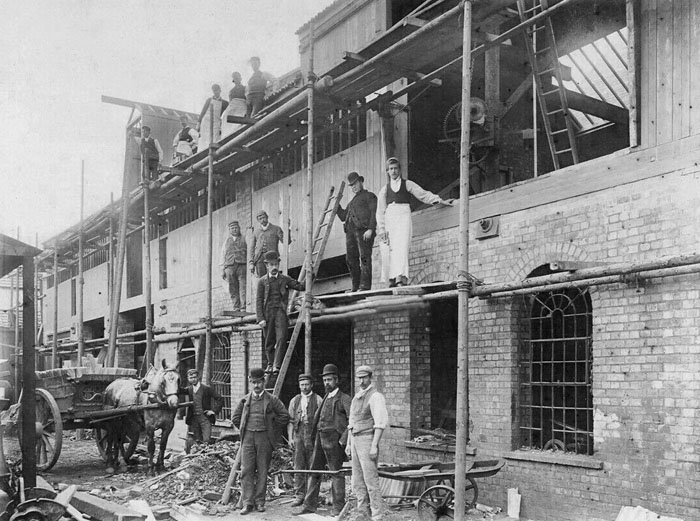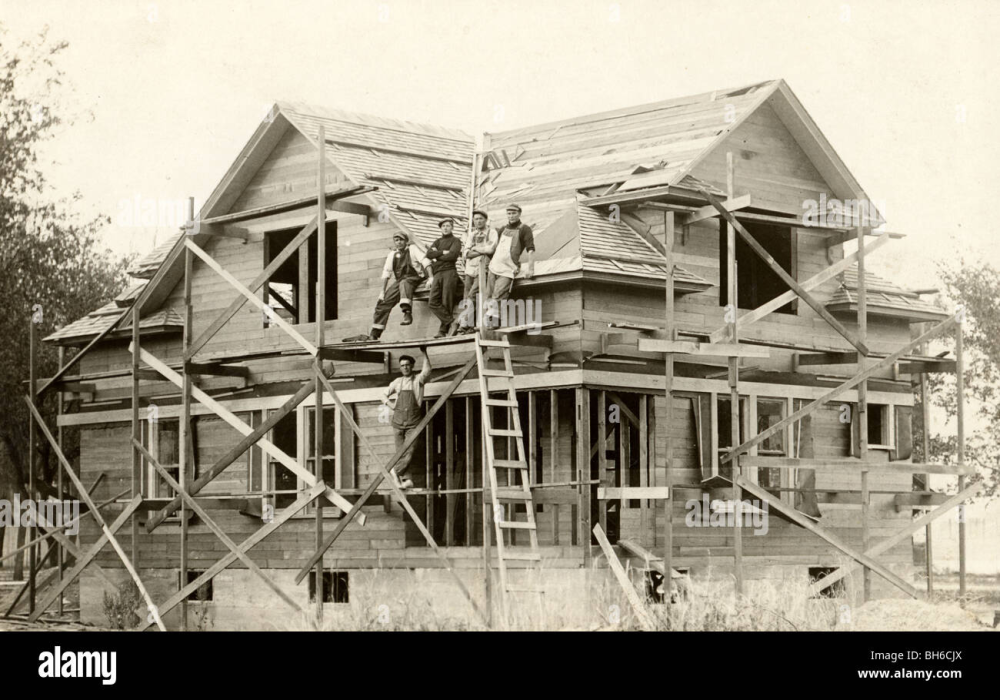Leaderboard
Popular Content
Showing content with the highest reputation on 01/01/24 in all areas
-
You're making this far too complicated. Do NOTHING. Just sell the things. Stop imposing EXTRA safety measures on things that are useful UNTIL they are imposed on things that are not. If you're not capable of flaring a copper pipe you're not competent to be installing these. It's an utter piece of pish if you have a vaguely decent cutting/flaring too. Don't try it using nasty old brake pipe flaring sets from grandad's garage though. That'll scratch the flare to buggery. If you're genuinely scared about people blowing themselves up... - Ban gas hobs - Ban gas ovens - Ban domestic gas connections - Ban portable calor gas heaters - Ban people putting ***15kg*** propane cylinders indoors - Ban camping gas - Ban cans of WD40 - Ban bloody air fresheners https://www.bbc.com/news/uk-england-essex-41179132 https://www.bbc.com/news/uk-wales-56337761 https://www.bbc.com/news/uk-england-leeds-50810196 Or just let the idiots blow themselves and their families to bits. That will also reduce carbon emissions. (though sadly they all survive just fine; albeit slightly more awake than before they lit the spliff) But don't discriminate against useful things by forcing them to be safer than useless things or more environmentally damaging things. If you're objecting to propane on the ground of safety...then start with gas safety in general and work your way right down to minisplits. They. Are. Not. A. Priority. Unless you're a supporter of DuPont/Chemours wanting to sell nasty gases or Putin & Xi. 😉2 points
-
I've just DIY'ed my install. Heatpump cylinder from eBay (new) £650. Samsung Coastal 5kw heatpump £1690 ex vat Samsung controller (eBay new) £250. Pipework,valves,fittings, etc £400 G3 course £300. So £3290 I think @JohnMo got a good deal on his ASHP, I tried an alternative and it didn't work out, so ended up with time constraints and had to bite the bullet on the Samsung.2 points
-
2 points
-
Life is easy then. Vented cylinder with an F&E tank, dual shower pump on the delivery side pumping to both taps. Cheap and easy to install, no need for a plumber to inspect and sign it off. Some will tell you that vented cylinders loose more heat, but no one has yet shown me how this happens. They also tell me that an unvented cylinder delivers more hot water, but again, I have never seen an explanation.2 points
-
Can loose a lot of space though. My house is 3.7m wide, 7.5m long. Adding 0.15m to each wall of insulation would reduce the floor area from 27.75m2 to 24.48m2, 12% smaller. And there was (expletive deleted) all to start with. Then, where the stairs are, the width would go from 2.8m down to 2.5m. External wall insulation is the only viable option, but as I am in a World Heritage area, not allowed to do it. As the aim is to reduce carbon emission, changing our energy production is the only option. My loss of ~3m3, if replaced with 150 Wp of PV, would generate about 0.15 MWh of energy each year as an off set. That is about a sixth of my annual energy usage. The PV does not have to be on my property, it can be tacked onto another system somewhere. Thinking about it, for every linear metre of 0.15m thick insulation, that is 45Wp, or 45 kWh/year of generation potential. Going to be cheaper to electrify and install PV. So how much PV would you get instead of insulating houses. Take a small house 6m by 8m, that has a foot print of 48m2, the linear metres is 28m. That would give us, at 0.15m insulation thickness area of 4.2m2. Or about 800 Wp, which would generate close to 0.8 MWh/ year.2 points
-
Oh dear. If only people had stayed awake in school science lessons. What sort of (expletive deleted) approves these installations.2 points
-
I’ve seen them in the flesh in the Cool Energy trailer at the installer show. They are very nice units and are quiet in operation. Much nicer than the smiths ecovector that we ended up using (because they were the only ones that would fit over the doors). The wiring on the reverso ones does look a little complex though. The smiths have a built in thermal switch that will turn them off until the flow temp hits 37-38. Reverso units are rated for cooling though.1 point
-
I can’t see how you can achieve this and comply with building regs. You will need 100mm insulation between the rafters and 25-50mm over the face, or a different makeup, but would need to achieve a similar insulation value. This would completely hide the original rafters, so you would need to put in dummy rafter and then fit the dummy batten and tile effect. Will it be worth it ?.1 point
-
Thanks @Ferdinand I had a good read at the linked thread good tricks! In our case, the rewiring has already been started and it's going on the concrete ceiling (second ceiling to be built on top of that). Heating pipes will run below the internal walls insulated plasterboard boards, as those are 62.5mm thick We're having an ASHP installed, too, but unfortunately we couldn't go for UFH because of the big downward heat lost that would create (the concrete floor is not currently insulated). Any reason why you used laths throughout the floor, rather than just at the edges to create the service channels? In our plan there would be no laths Which @JohnMo's idea are you referring to, Wedi boards? It's a very valid alternative, it would give us comparable insulation saving perhaps 5mm of floor height (or less, depending on adhesive thickness) but it comes with a few disadvantages which I highlighted in my previous post. Still a very good option though1 point
-
In the Loxone Youtube video, they just show it installed in front of a round euro box and screwed directly into the plasterboard. See1 point
-
Forgive me for plugging my own ideas but this might do the job for you at a much lower cost. Basically it's a double radiator in a pair of kitchen cupboards with PC fans above. More info and picture on Originaltwist DIY fan-coil heater. Integrated into some storage cupboards with a nice shelf on top it will look good in a bedroom.1 point
-
1 point
-
If the room heat loss is 1800W and this unit is rated at 1680W at 50C water but you are going to feed it with 40C water at an estimated derating of 50% then it won't have enough heat output for that room.1 point
-
One middle way is to ask the seller to provide a statement via their solicitor that the work referred to was in place when they arrived. It would be strongest as a notarised Statement of Truth, but even a query from your solicitor to their solicitor, with a written answer, should have weight. If their solicitor has already said that, there is no reason it cannot be via an email or letter exchange. That avoids pfaff with indemnity policies, and may feel less confrontational to the seller. But TBF it is currently a sellers market, so there may be opportunity for you to insist on an Indemnity Policy. If you insist that will put it up their agenda if they want you as a buyer. An indemnity policy is usually inexpensive, so even if you chose to buy one it would be a tiny fraction of the cost of the house. It is your call.1 point
-
only way that would work is if you lived in a country with lots of sun in the winter --then solar thermal could charge up your humungus insulated water tank all summer and winter like the alps where alot of the time there is bright sunlight even when its cold outside Iwas very keen at one stage to do this --but the costs for the and insulation made it non viable Idid see a chalet in the alps that had such a tank --as it was off grid and not very big --so it worked but UK heat pump is the way due to weeks of no sunshine inwinter when you need the heat1 point
-
Yes the battens were painted with a dark brown wood preserver. The tile battens and the fresh cut ones. Get a couple of trestles or tarp on the ground and paint them all at once by pushing all the battens together. Paint one face of each, turn each one 90deg, push back together and repeat. I'm debating even painting the palets themselves if I do one.1 point
-
Might want to put spaces between the boards - lets the wind through without making your gates two big sails. I always liked vertical boards set edge on - gives the gate a bit more of a contemporary look.1 point
-
Don’t do it - asking for trouble - water will pour in if it’s not done properly.1 point
-
Put the master suite across the back of the house and move bedroom 2 to the front of the house. The two rear gables are that close to being equal that they look odd. Equal them up. The porch is a wee bit twee as well.1 point
-
Thanks, I was planning on putting screws into the three unfixed hangers, for the others that don't look as tight, would it be wise to try and hit the nails in further or add screws or best to leave alone? I think I'm going to noggin the long edge joins on the boards which may seem overkill but I'd like to put this issue to bed.1 point
-
It’s definitely achievable, but you need to look at all these details and work out how much more it will cost versus a standard verge. I can see some very expensive leadwork needed for your design and also capping they could be stone or more modern aluminium or lead. I could see each end of that house being 2-3 grand more than standard. So is it £6000 nicer.1 point
-
My neighbour has just done something similar ugly steel security door, drilled it full of 10mm holes and pumped in 3-4 cans of expanding foam, he then screwed oak tongue and groove boards to the face, it now looks like an old farm door, he had to add timber to the frame and pad out the architrave. It looks better than I probably described it.1 point
-
Exactly. Not illegal to sell to somebody who doesn't hold an fgas ticket. 😉 You won't. Propane is the low GWP / non toxic option. It's explosive in the right mixture though. (if you try hard enough - though the EU is sensibly about to up the limits from 150 grams to 900 grams based on experience / calcs) F-Gases (the lot of them) are non toxic / not explosive. They're ALL high GWP though. (in one way or another - either directly or through intermediate breakdown products) I can't get too excited about blowing people up whilst we're still piping methane into houses and relying on humans not to leave the valve open without the flame being lit. I can't get too excited about dropping half a kilo of R32 by accident whilst you can still buy a plane ticket to Magaluf on purpose either. The potential benefits outweigh the risks. What you DON'T do is allow A N Other to buy the gas itself. If you fudge up you need to call a pro to check it all. No constantly topping up leaking splits. Not that the so called pros are any better. You can't get thicker than a kwik fit fitter yet they're still allowed to hose R134a into shagged old cars without so much as a sniff test. A reality. https://www.gradientcomfort.com/ You take a performance hit and a cost hit though.1 point
-
Like I said before, you're stuffed, it costs too much. Governments fault though. In reality a house has 3 parts that make up the value. 1. The structure 2. The value of the land underneath 3. The legal ability to exist. The government has massively inflated the price of each by: 1. Insisting we build houses to look like they did a century ago, bricks and chimney pots, clay tiles, dormer windows, porches annexes and flat robes galore. God forbid you install an ASHP outdoor unit. 2. Zoning restrictively, saying what you can build, and where you can build it. 3. The planning permission system. Horribly slow, expensive, massive power to NIMBYs. Loads of different government agencies weighing in with completely uncordinated requirements. The state so effectively control supply and restrict innovation is why we have such expensive and crap houses.1 point
-
There are 2 issues here. Does the work affect the safety of the building? Your survey should answer that question. The other issue is can a statutory body take action to enforce non compliance with building regulations? The practical answer to that question is no. LAs will only take enforcement action if they become aware of the non compliance and they are extremely unlikely to take action unless there is a serious issue affecting safety. They have more calls on their resources than chasing trivial compliance issues. If the LA wish to take action they should issue an enforcement notice within 12 months of the work having been carried out. They can pursue non compliance after that but they need to apply to a court for an injunction to stop the use of the property. If the work was done more than 20 years ago the chance of enforcement action being taken is as close to zero as makes no difference. There are also time limits on enforcement of planning law which are long expired.1 point
-
Planning and Building Regulations are different things. The alterations should not have required any form of Planning approval (unless it’s a Listed Building). The alterations may well have required Building Regulations. It would be down to the current owner/seller of the property to prove any works that did or did not require approval. It would therefore be them who would consider a Regularisation application. However, as the works appear to have been carried out so long ago, their best bet would be to take out Indemnity Insurance. They hold little to no weight should anything be wrong with the property, but it’s accepted as a legal document for the sale to proceed.1 point
-
Basics of the maths Heating season SCoP so far is 3.7 for heating including DHW. So around 4p per kWh, compared to 7p to 8p for gas when you factor in efficiency. We batch charge the floor overnight (about 6 hrs) down to an average day temp of about 3 degs and let it run longer on colder days. We generated 9kWh the other day, so that would have been free running for the heat pump - can't get that with gas or oil.1 point
-
The only advantage I see is it will flow high temperatures so suitable for normal sized radiators. But charged on E7 or similar. May as well install storage heaters. I will dispute. If you have a battery and UFH it's loads cheaper and you can also cool. I'm just using standard E7. Heating season this year has had a warmer house and a lower bill. Heat pump output much better match for the house heating demand than the gas boiler was.1 point
-
Well you can use a 110mm drain pipe with lime chips for a condensate drain for a gas boiler so don’t see why the same wouldn’t work for ASHP1 point
-
Re inventing the wheel. It is an "electric storage boiler" A thermal store heated by a number of immersion heater elements, typically up to 4 of them for a 12Kw input so on E7 a storage capacity of up to 84kWh. I know several people with them, and none have a good word to say and the conversation always uses the phrase "expensive bills" More effective? That just means more able to heat very hot water to run small radiators to avoid upgrades, i.e. cheaper install. I can't see how it is cheaper to run than an ASHP. Unless you can still find an E7 tariff with the off peak rate 1/3 a normal tariff, i.e. about 10p per kWh at the moment. It's just spin from a manufacturer desperate to maintain a market for such a product.1 point
-
I made a miscalculation on the number of terminal blocks and it looks like I can fit all the 230V TBs in the top din rail. should please @Dan F and @Rob99. 😉 also leaves a bit of room for basement expansion on terminal blocks and enough room for an 8 channel whitewing mains dimmer on the 2nd rail if required. I might not even need to get a cabinet extension. 🤞1 point
-
1 point
-
First time DIY self building and my fault to be honest. Hubby knows how to build, but not really how to read plans, he's used to be told, do this, do that and then do the other. Plans are down to me and I've been so busy at work that I didn't stop long enough to even think. Not again, I've spent this time going over everything again to check, double check and then do it again. This wall was also supposed to be under-pinned, but when we took out the floor as per the plans the walls turned out to not be attached to the existing foundation and after one fell down it became clear that this bit of the build needed to be done from scratch. This also necessitated involving the LPA as the existing plans were for single skin and EWI not a cavity wall, which is why there wasn't enough bearing space. The other option given us by SE was to put in secondary foundation inside what we had poured, but then that had to be attached with horizontal rebar and vertical mesh as well as the existing mesh. So, knocking down the cavity wall up to damp proof was a much easier option. The shear links are attached with metal ties, bit like cable ties, but metal in the middle of each mesh, so that side is 100mm so shear links are also 100mm. There are also 'foam' expansion sheets around the wall at 20mm thick to allow for any movement of the slab / mesh. Barn conversions are definitely much more tricky than new builds.1 point
-
Yes no issue. The lids on the inspection chambers are screwed down and airtight. This sort of thing: https://www.sumpsandpumpsdirect.co.uk/acatalog/Mini-Sewage-Pumping-Station-5m-Lift.html1 point
-
Weather compensation is when a boiler modulates its flow temp based on outside temp. You are obviously running a set flow temperature so ignore my ramblings about weather compensation (WC) Salus self balancing actuators function by reading flow and return temperature from the floor loops. They have a temperature detector on either end of each pipe loop by the manifold. Below a flow temperature of 30 deg, they (Salus actuators) manage the flow to achieve a set point point 4 deg dT (Delta between flow and return), and over 30 degs they manage this as a 7 deg dT. As more or less energy is taken from the floor (room temp change, solar gain etc) the dT will naturally fluctuate, the actuator will open and close to maintain it's internal dT set point.1 point
-
@iceverge kindly looked at this for me and replied as below. As they said any other comments are welcome.. the two add on ‘pods ‘ as I call them are because I will never be granted a bigger overall house from planning but they may allow the little extra single story ‘pods’ which would help. So here is the message . Which I’m very grateful for. This forum is invaluable I’ve learnt so much from my posts . Thanks to everyone Nic Here we go. I've thrown about an hour at this drawing. Its like a cardboard cut out template of a house PHPP uses external dimensions unlike SAP. NE wall 46.7m2 Window 3.3m2 NW wall 51.7m2 Window 14.5m2 SW wall 46.1m2 Window 4m2 SE Wall 61.9m2 Window 12.3m2 Floor 94m2 Roof 94.6m2 Your current wall thickness is 400mm. Roof is 350mm. This would result in U values of about 0.16W/m2K with ICF and a joisted roof. Lets assume you can install a floor as thick as you wish with a U value of 0.1. Windows at 1.1w/m2k installed. I note you're in the south coast. Lets assume zero as a minimum temperature. A good airtightness score and MVHR. Take any internal heat gains to be cancelled out by minor thermal bridging and the inefficacy of the MVHR. That leaves us a simple enough sum to do. Area X U value X delta T = Heat Loss Total Your heating load as stands would Roof: 94.6x0.16x20= 302w Floor 94 X 0.1 X 15 = 141w Walls 206.4 x 0.16 x20 = 660w Windows 34.1 x 1.1 x 20 = 750.2 W Total heating demand 1853 w. The foot print is 94m2 and the floor area is about 150m2. You're at roughly 12.5W/m2K specific heat demand vs the Passivhaus limit of 10W/m2K. There's a couple of things you could do to adjust. The small add ons to the south and west adddisproportionately more external surface area than the floor area. For instance the one to the west adds only 5.5m2 of floor area but 131W of heat load or 24W/m2. It's twice as bad as the average of the house. Designing from scratch they'd be a far more expensive option than just making a house a pure 4 sided box or even a full height "T" or "L". I understand you are size limited but slightly thicker walls or roof would help. Only marginally. As you can see even good triple glazed windows loose a tremendous amount of heat. More than all the walls combined. You have 14m2 of windows on the North wall. This will loose heat all year around as unlike the South facing window's they'll never gather energy. ( Nett loss) Consider making them smaller. For mainly this reason it's very unlightly you'll be near the annual heat demand of a passivhaus. I would guess you'll be about 4000kWh per year. Assuming a well functioning ASHPand 25p/unit this will translate to about £250/year for space heating. A passivhaus might be £150. Over all, if built to good standards of airtightness and thermal bridging you'll have a very warm house.1 point
-
They are. On BH there are plenty folk who have done their research and have a good idea what they want already. If you get your Architect or SE in early then they can do almost a watching brief, give you the benefit of their knowledge and sometimes say.. are you sure you want to do that?.. have you thought about this and that and here is a better way for you to consider. I often say to my Clients, (sometimes they have firm, almost entrenched views) see some of the ideas I come up with.. you won't like them, but that is ok as it's part of the design process and don't be afraid to say so. But on occasion they may say .. we never thought of that! Good design often means at the start throwing everything on the table, most of which gets ruled out.. then you concentrate on maybe one or two options and develop that further. From time to time I work with a QS if the Client wants more certainty, but like all things that comes at a price, and as @Kelvin etc have said not all QS's are briliant! As a designer I most often work on a fixed fee. My fee is built up between my Architectural input vs my SE input, two different rates apply depending on the mix.1 point
-
I don’t understand the need to bash architects. I (architect) use the SE sparingly as he charges more per hour than I do, and I want what’s best for my customers. Hope your SE knows all the planning and building regs, and can design a workable and attractive plan, because most I’ve met are not planning or design creative. OP, depending on where you live and the size of your house, I would expect to pay maybe about 2-3k for each stage.1 point
-
And boys going though puberty. https://www.dailymail.co.uk/news/article-1087772/Boy-12-collapsed-died-using-Lynx-deodorant.html0 points
-
Assuming you can get people to do the work and pay them then it's fine. However it's still a bespoke building. Every part of the TF cut to length on site, bricks laid one by one. Craftsman galore. Here's how we built factories in 1900. Here's how we do it today Here's houses in 1900 Here houses today. See my issue?0 points
-
Our tale of delays and woe is competing even with @pocster for time taken From Oct - Dec progress has one again been delayed by weather, flooding, cold and in all honesty a bit of incompetence on our part meaning we are further back than when we started. This period started well enough with the trenches for foundation filled ready to start building walls. After digging down and down to the required depth (or so we thought) we started to place the cellcore ready for the mesh / concrete. Most of this had to be done by hand as we somehow managed to build the walls before digging deep enough for the hardcore and blinding and couldn't reach lots of it with the digger. The cellcore and mesh were laid Then this hit - storm babett our road and the site were totally flooded and the work from the previous day ruined After waiting for it all to dry enough BC came out and said wrong, wrong, wrong. We had mis-read our plans and somehow forgotten to suspend our suspended floor and to add even more woe we hadn't left enough bearing space on the foundations for the mesh to sit on. Cue 4 weeks of SE, BC and the associated costs. To be fair they were both really helpful at trying to sort out what was our mess with the least upheaval to us. Then partially fill the hand dug hole, thankfully only one room not the whole house and having crushed 104 tons of concrete hardcore isn't in short supply. In the end we had to knock down what we'd built and get agreement from SE & BC that we could use Shear Links between the mesh sheets and have any overhang of 150 instead of 200. I hadn't even heard of Shear Links so sourcing them was fun as neither had any of the main BM's. there are also many different shapes, we needed shape 33, like a paperclip So, amended drawings, shear links, time and everything else leads, once again, to more cost and more time. It's also rained so much in the last few months that any progress was hampered. We are still not back to where we were, the blinding needs whacking again so the cellcore can be put down again, the mesh needs placing again with the shear links, the walls need rebuilding to DPM and BC needs to inspect. Then we will be back to where we were 2 months ago. One day, I'm hoping to do a blog entry where everything is wonderful 🙂 More in a couple of months.0 points
-
0 points





